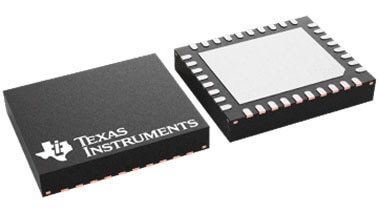Buck-Boost Battery Charge Controller Meets Growing Power Needs
Growing reliance on more powerful battery-powered devices can lead product designers to create different battery chargers for every desired application. Texas Instruments (TI) offers a more efficient path with a buck-boost battery charge controller providing high-power density battery charging over a wide voltage range. It can also be configured for bidirectional charging with USB Power Delivery (USB PD) extended power range (EPR) standard applications.
Instead of developing separate battery chargers for every application, designers can utilize TI's BQ25756 (Figure 1) battery-charger integrated circuit (IC) with wide voltage input (VIN) and voltage output (VOUT) to create universal charger solutions that can be used across different input adapters and battery configurations. Rather than creating one charger for a 36 V e-bike battery and another for a 48 V battery, designers can develop a common battery charger for both models, cutting down design iterations and costs.
 Figure 1: Texas Instruments BQ25756 bidirectional buck-boost battery charge controller. (Source: Texas Instruments)
Figure 1: Texas Instruments BQ25756 bidirectional buck-boost battery charge controller. (Source: Texas Instruments)
Designers can take advantage of the BQ25756 customizable onboard charging profiles tailored to each battery’s specific needs, including high cell counts, high operating voltages, and multiple battery chemistries. They can embark on a simple transition to charging the next generation of electrified products and provide the best charging experience across applications as diverse as smartphones, power drills, e-bikes, portable chargers, and solar panels.
The switched-mode buck-boost controller provides an input voltage operating range of 4.2 V to 70 V with multi-chemistry support for Li-Ion, Li-polymer, or LiFePO4 batteries. For Li-ion and LiFePO4 chemistries, the device checks battery voltage and charges the battery in different phases: trickle charging, pre-charging, constant current (CC) charging, and constant voltage (CV) charging. The BQ25756 supports 1 to 14-cell Li-ion charge or 1 to 16-cell LiFePO4 profiles.
In reverse mode, the device draws power from the battery and regulates the input terminal voltage with an added constant current loop for protection, supporting USB-PD EPR power profiles. The USB PD EPR makes it possible to develop an application where a battery pack can function as a power bank for other devices with variable charging profiles -- such as an electric lawn mower battery charging the consumer's cordless vacuum cleaner.
USB-C power and data connectors picked up considerable market penetration when Apple announced in 2023 that it would adopt that format for iPhone 15 models. Few manufacturers can withstand a European Commission end-of-2024 mandate that only USB-C adapters can be used on new mobile devices such as phones, tablets, and even keyboards and headsets.
Many devices and charging systems were designed to an earlier USB PD specification that supported power needs up to 100 W. That's now considered the standard power range (SPR) for USB, while EPR supports up to 240 W. While the TI BQ25756 supports applications beyond USB-C PD, it's hard not to get excited about the potential of exploiting that increasingly common specification.
Designers envisioning more universal chargers must still deal with the reality that different devices rely on batteries with very different cell counts and voltage requirements. That's where the TI buck-boost battery charge controller plays a vital role.
When a device is charging, a buck-boost battery charger can buck (step down) the source voltage if it is higher than the battery or boost (step up) the source voltage if not. The BQ25756 provides high-efficiency charging over a wide voltage range with high accuracy, 0.5% charge voltage regulation, and ±0.3% charge current regulation. It operates in I2C host-controlled charging mode and supports standalone charging mode via resistor programmable limits.
The TI controller also features automatic maximum power point tracking (MPPT) for solar charging, ensuring optimal performance of solar panels. A battery charger with an MPPT algorithm will autonomously find the maximum power point (MPP) of a solar panel under different sunlight conditions. The wide VIN and VOUT range of the TI buck-boost battery charger controller can support the diverse output-voltage values of a solar panel.
Conclusion
TI's BQ25756 bidirectional buck-boost battery charge controller provides the opportunity to create the highest power density universal charging solutions for industrial applications. The industry’s first compensation-free buck-boost charge controller, with up to 70 V input and up to 14-cell battery operating range, is a powerful new option for product designers eager to create a new generation of chargers able to support multiple applications and devices.

Have questions or comments? Continue the conversation on TechForum, DigiKey's online community and technical resource.
Visit TechForum









